Never too late to save Earth: Q&A with Leuser forest guardian Rudi Putra
Jun 17, 2021
- The Leuser Ecosystem is a protected tropical rainforest on the Indonesian island of Sumatra, boasting 10,000 species of plants and 200 species of mammals, dozens of them found nowhere else on Earth.
- For 20 years, Rudi Putra has been working on saving this ecosystem which covers nearly 23,000 square kilometers (8,880 square miles) and is home to the Sumatran rhino, tiger, elephant and orangutan.
- Rudi’s efforts to save Leuser includes reforestation of illegal oil palm plantations, for which he was awarded the prestigious Goldman Environmental Prize in 2014.
Rudi Putra is well-known in Indonesia’s conservation world. Born in 1977 in Aceh Tamiang district, in Aceh province on the northern tip of Sumatra, Rudi has been working on preserving the forest and wildlife of the Leuser Ecosystem for 20 years.
Known by its Indonesian acronym, KEL, Leuser straddles the northern half of Sumatra, covering nearly 23,000 square kilometers (8,880 square miles) within Aceh and the neighboring province of North Sumatra.
Its ecological value can’t be overstated: scientists and conservationists consider it among the most important forests left in Southeast Asia. Here live an estimated 10,000 species of plants and 200 species of mammals, including the critically endangered Sumatran orangutan, tiger, elephant and rhino.
Indonesia granted the ecosystem an official protected status in 2007, but despite this designation, rates of illegal poaching and logging in the Leuser Ecosystem are estimated to be some of the worst in the country. Data show that the populations of the critically endangered animals in Leuser are declining rapidly, and more than 4,500 km2 (1,740 mi2) of its landscape has also been destroyed, mostly by oil palm cultivation and illegal logging, according to data from the NGO Forest, Nature and Environment of Aceh (HAKA).
Rudi started his work on conserving this ecosystem in 2000 at the Leuser Management Unit (UML), which was set up to manage an EU-funded effort to conserve the ecosystem. Rudi later moved on to the Aceh government’s Leuser Ecosystem Management Agency (BPKEL), before he and his colleagues founded the Leuser Conservation Forum (FKL) in 2013.
He completed his master’s degree in tropical biodiversity conservation at the Bogor Institute of Agriculture outside Jakarta, while also leading a team that protects this forest. In 2014, Rudi’s efforts to protect Leuser, including reforestation of illegal oil palm plantations, was recognized and awarded with a Goldman Environmental Prize.
The FKL currently has 28 teams patrolling Leuser daily. The patrols are carried out along with forest rangers from Mount Leuser National Park — an area within the ecosystem that receives a higher degree of protection — and the Aceh provincial forestry and environment service.
Rudi Putra spoke with Mongabay Indonesia in early June 2021. The following is a translated excerpt of that interview.
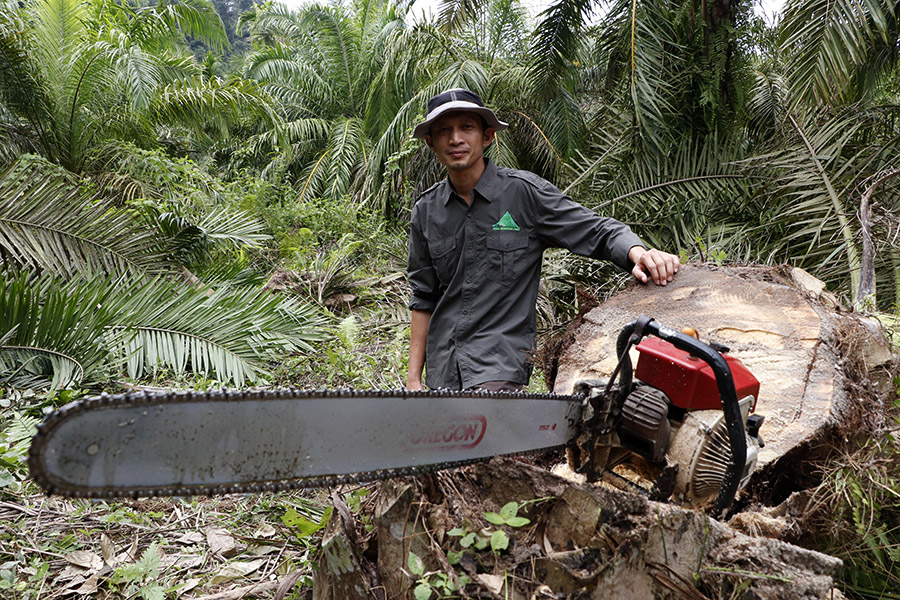
Mongabay: When did you start working on protecting Aceh’s forests, the Leuser Ecosystem in particular?
Rudi Putra: I started working on conserving KEL since the year 2000. I first set foot in Leuser in 1998, when I was still a biology student at Syiah Kuala University (in Aceh), through an invitation from the Leuser Management Unit (UML).
Luckily, my visit was accompanied by Professor Carel van Schaik, a world-renowned orangutan expert. Following that meeting, he granted me a research scholarship in 1999.
I really wanted to continue the research in 2000, but it was cancelled due to the heated security situation in Aceh at the time. In fact, our research station where we did our research was burned down.
Mongabay: Which institution did you first work for?
Rudi Putra: I worked for the UML. There is a funny story I can still recall. I was going to Medan, North Sumatra, at the time for a final interview at another institution. After the interview, I dropped by UML to meet some friends I knew from back in my research days.
Upon seeing me, a friend immediately shouted, grabbed my hand and led me to a room. I was introduced to a secretary who, according to that friend, had tried to reach me numerous times.
That same day, I was told to join a navigation training with the Ecosystem Rangers, UML’s wildlife patrol unit. I gladly accepted the challenge even though I didn’t bring anything with me.
Luckily, a colleague at the office lent me a sleeping bag, a jacket, a bag and several other necessities to help me fight off the cold weather at the training site. From there, I was assigned as a supervisor.
It was a stroke of luck able to be working with that unit, because I was able to join dozens of different characters dedicating half their time to preserve Leuser. They were the forerunners of the forest patrol known today as rangers.
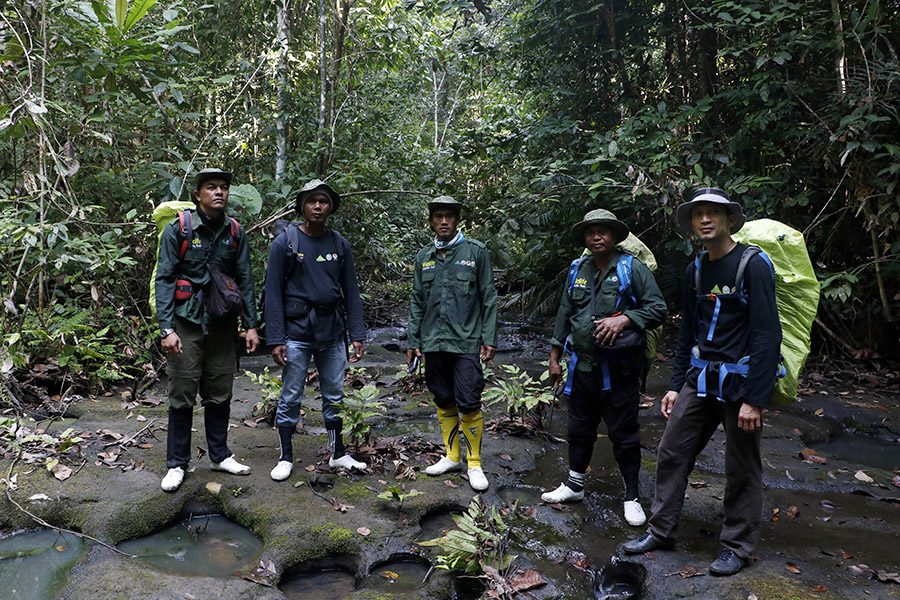
Mongabay: Why did you choose to work on conserving the Leuser forest and its wildlife?
Rudi Putra: People won’t really know Leuser until they set foot in this extraordinary forest. Many people who initially visited just because they were assigned returned home as lovers of Leuser. Leuser is magical, the landscape is vast, the animals are incredible.
We describe some places in Leuser as Singgah Mata, refreshing to the eyes and our other senses. We can spend hours just gazing at the greenery of the landscape, with endless sounds of water, wind and wildlife.
For me, Leuser’s natural beauty and its wildlife are not the most interesting aspects that drive me to work here. Leuser’s function as the vital part of the community’s life is the main reason, such as providing water, clear air and preventing ecological disasters.
Mongabay: Meaning?
Rudi Putra: Leuser’s most important value is as a source of sufficient livelihood for millions of people in Aceh and North Sumatra. Leuser is water. Without Leuser, we will lose water resources. There is no life without water.
Leuser also provides clean air that we breathe every day. Leuser is the lungs of the world. How can we live without oxygen?
Protecting Leuser is a must and a manifestation of our good deeds.
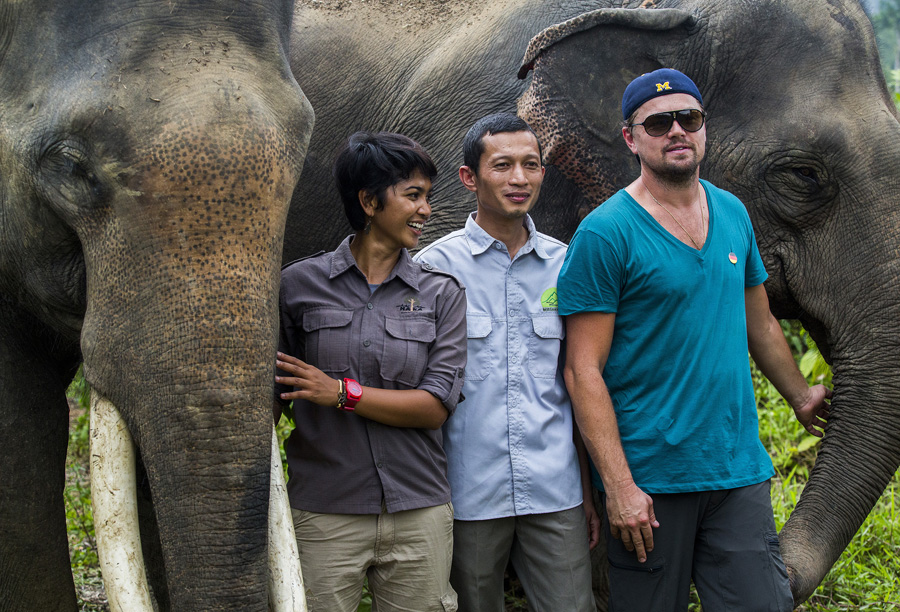
Mongabay: What is Leuser’s condition right now?
Rudi Putra: There is bad news and good news every day in Leuser. The bad news is that deforestation, illegal logging and wildlife poaching are still happening. Damaged forests are estimated at 20% out of the 2.6 million hectares (6.4 million acres). But this coverage includes areas designated for other uses (APL) in the ecosystem, which have always been in the form of farms, settlements and several others.
The rate of this degradation is currently decreasing. Compared to 1995-2005, today there is way less damage. Back then, hundreds of giant trucks transported logs from Leuser to processing plants every day.
Hundreds of meters of wooden rafts are washed away every day. Based on data from the HAKA Foundation, annual forest destruction in Lesuer was around 13,690 hectares (33,830 acres) back in 2015. This has since dropped to 5,395 hectares (13,330 acres) in 2019. Nevertheless, HAKA recorded an increase in deforestation in 2020, to 7,331 hectares (18,115 acres), which is thought to be related to COVID-19.
Another thing: while deforestation was previously caused by large companies, especially for oil palm, now it has shifted to small encroachments on a scale of 1-5 hectares (2.5-12 acres). Poaching has also decreased dramatically in protected locations.
Another piece of good news is that massive reforestation activities are being carried out in many places in Leuser.
Thousands of hectares of encroached land have begun to be returned to forests through natural restoration and agroforestry systems developed with the community. Thousands of hectares of forested APL land can also be maintained.
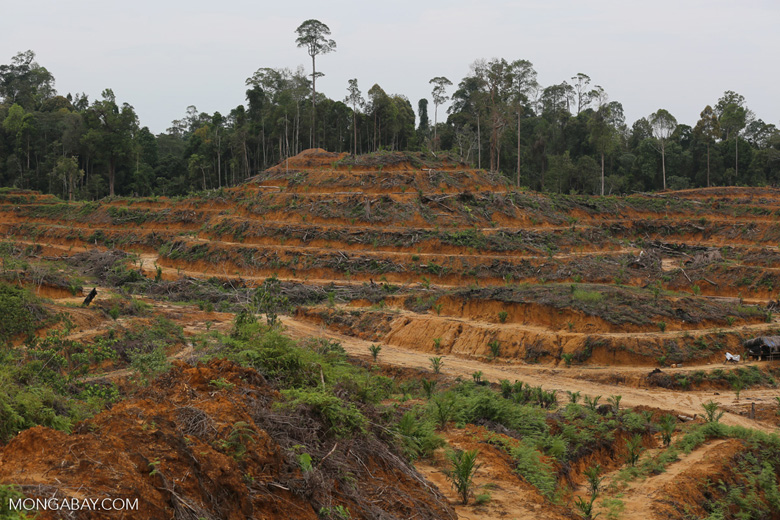
Mongabay: What needs to be done to keep Leuser from being damaged?
Rudi Putra: Increasing protection is essential for preserving Leuser. But a very important aspect of this is improving the community’s welfare and their understanding of the importance of protecting Leuser.
It’s time to not only ban, but also to figure out how to increase the community’s dependence on forests. There are many forest products that they can make use of, such as high-value non-timber forest produce.
Right now, there are many types of commercial crops that can be planted in the forest, such as jernang (a palm whose fruit produces a red resin), and numerous others.
Mongabay: How are FKL’s forest restoration efforts progressing?
Rudi Putra: Restoration in Leuser is interesting to observe, and it is the cheapest location in the world to do it, because nature in Leuser quickly heals itself without human intervention.
On Google Earth, we can see areas in Leuser that were once cleared for now-abandoned logging concessions or plantations, that have turned back into forests on their own in just a few years. We believe nature is able to restore itself without human intervention.
In one place in Aceh Tamiang district, we cleared 425 hectares (1,050 acres) of illegal oil palm. In four years’ time, an amazing thing happened: The land has transformed back into a forest and various species of animals returned to the area. This includes orangutans, tigers, sun bears and several others.
FKL has carried out restoration on an area of 5,000 hectares (12,355 acres) (of illegal plantations), most of it in the form of natural restoration. Some of this land is still forested but has been massively cut down for decades.
We negotiated with the community to release the land, for it to be allocated as protected forest. In other places we replaced oil palms, rubber trees and cocoa, which were illegally planted in the forest, with agroforestry crops. Of course, this was done together with the local community after obtaining a government permit.
Part of the area is also allocated for natural restoration: illegal plants are eliminated and the land is left alone until natural seeds grow on their own.
This agroforestry system is admittedly not comparable with the natural forest, but it is much better than conventional farming. There are usually two to three types of plants on farms, but with this system, 20-30 types can be planted, including some types of forest plants.
Most importantly, agroforestry can improve the community’s economy. In Tenggulun subdistrict in Aceh Tamiang, this system has reduced illegal activities by up to 90%.

Mongabay: How are endangered species faring in Leuser?
Rudi Putra: Some animals are indeed rarely seen now, such as some types of birds (hornbill, magpie, laughingthrush, and others). This is because they are easily hunted with weapons or snares.
However, most of the endangered species in other places appear to be safe and are thriving, such as orangutans and tigers, which we constantly monitor.
As for elephants, there is a problem with their population because they roam in lands that are claimed as community or company plantations. Consequently, conflicts between humans and elephants happen, which usually ends with the death of the animal.
We are currently helping the Aceh government to create land buffers between the community and the animals, including elephants, so as to create a harmonious life.
Mongabay: What is the biggest threat to the wildlife of Leuser?
Rudi Putra: Loss of habitat and poaching. Loss of habitat makes them move elsewhere or even get killed.
Threats to animals can be reduced by increasing protection. We observed that, in some areas that were poorly maintained, poaching and illegal activities were usually very high. However, as patrols increased, the number of these activities has decreased drastically.
In one place in southern Leuser, poaching has been reduced by 90% after patrol teams and observation stations were set up. It is also necessary to establish a forest damage monitoring unit that is connected to the authorities so that illegal activities can be directly reported and acted upon immediately.
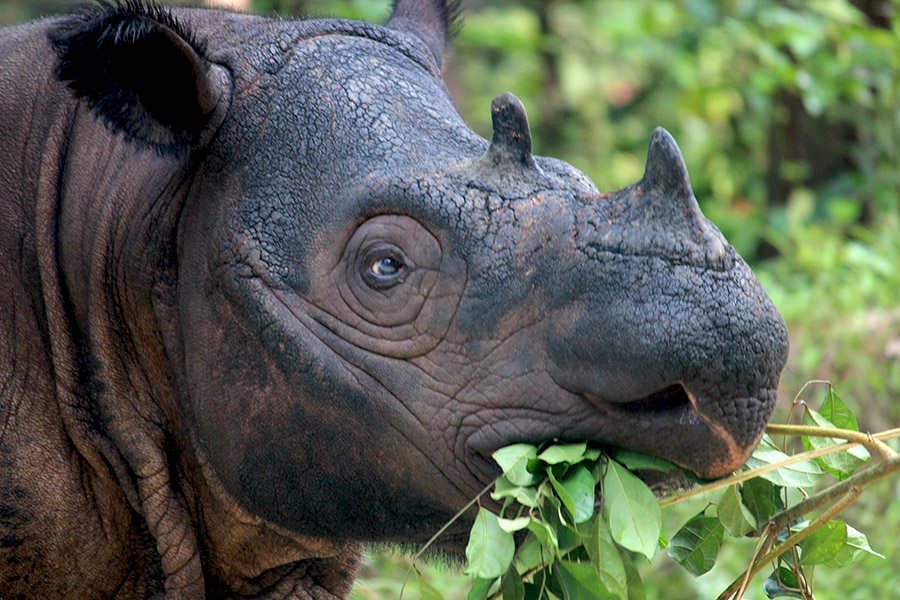
Mongabay: And Sumatran rhinos, how are they doing in Leuser?
Rudi Putra: The rhinos in Leuser are divided into two locations. The population is growing well in one location, even though the numbers are small.
In the other location, the population is not growing at all. There are no indications of any offspring born in several years. This is certainly an alarming situation that calls for rescue efforts.
Mongabay: For the rhinos that are can’t breed naturally, what actions are urgently required?
Rudi Putra: The urgent action to take is to capture and transfer them to the existing captive-breeding facilities, or the ones that will be built. There’s no point in leaving them in the wild, because without any indications of birth they’ll go extinct on their own.
Even if there is breeding, with a very small population extinction is also inevitable in the long run. This situation is bad for the population in the long term.
Mongabay: How is the development of the new Sumatran Rhino Sanctuary in Aceh going?
Rudi Putra: We are currently still finalizing the design and government permit for the location where we plan to build. We hope this facility will be completed and ready to operate for rhino conservation in the coming months.
Mongabay: What is the concept?
Rudi Putra: The concept of the SRS is to produce as many baby rhinos as possible and then cross them with other individuals with different genetic variations.
When we have enough individual rhinos, the next step is to return them to nature, of course within controlled areas, until they are ready to be released in a wider habitat.
There are many places where rhinos were once found but are now lost, which could host these captive-bred rhinos.

Mongabay: What are your hopes for the environment?
Rudi Putra: Right now, the demand to make the Earth green again is rising. The need for sustainably produced goods is increasing and the movement to use green energy is growing. In many countries, reforestation is happening rapidly, and even deserts have begun to be greened.
What does this mean? We must not let Indonesia, a country with extensive forests, go the opposite way. We, all Indonesian people, and the younger generation must care and act to preserve the environment.
It’s never too late to save the Earth.

This story was reported by Mongabay’s Indonesia team and was first published on our Indonesian site on June 6, 2021.
FEEDBACK: Use this form to send a message to the author of this post. If you want to post a public comment, you can do that at the bottom of the page.